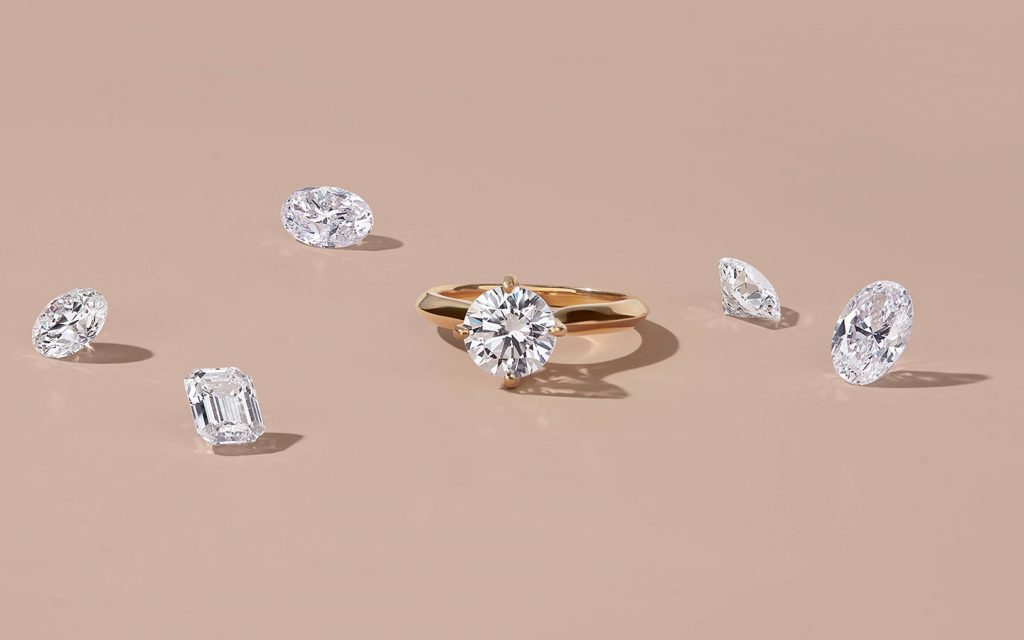
Diamonds have always held a special place in human hearts and cultures. They symbolize love, commitment, and eternity. But with advancements in technology, a new contender has emerged in the world of gems: lab grown diamonds. How do these engineered marvels stack up against their natural counterparts? What exactly are the “4Cs” that everyone keeps talking about? Let’s delve into the brilliant universe of lab grown diamonds, focusing on the 4Cs: Carat, Clarity, Color, and Cut.
Understanding Lab Grown Diamonds
Lab grown diamonds, also known as synthetic diamonds, are created using advanced technological processes that mimic the conditions under which natural diamonds form. While natural diamonds are birthed in the Earth’s mantle over billions of years, lab grown diamonds crystallize in a matter of weeks. Despite their different origins, both types share identical physical, chemical, and optical properties.
The Importance of the 4Cs Lab Grown Diamonds
Just like natural diamonds, lab grown diamonds are evaluated based on the 4Cs: Carat, Clarity, Color, and Cut. These criteria were established by the Gemological Institute of America (GIA) and provide a universal language for assessing the quality of diamonds.
1. Carat: The Measure of Weight
When people think of diamonds, size often comes to mind first. Carat is the unit of measurement used to describe the weight of a diamond. One carat equals 200 milligrams. Larger diamonds are rare and thus more valuable, but two diamonds of equal carat weight can have significantly different values depending on their other characteristics.
In the context of lab grown diamonds, carat weight can be produced with more consistency compared to mined diamonds. This means that larger, high-quality diamonds are more accessible and affordable for consumers.
2. Clarity: The Crystal Clear Truth
Clarity refers to the presence of internal or external imperfections, known as inclusions and blemishes man made diamonds, respectively. The clarity of a diamond is graded on a scale from Flawless (no inclusions or blemishes visible under 10x magnification) to Included (inclusions and/or blemishes visible to the naked eye).
Lab grown diamonds typically have fewer inclusions than natural diamonds. This is due to the controlled environment in which they are created. The enhanced clarity can make lab grown diamonds more appealing, as they tend to have fewer imperfections.
3. Color: The Hue of Purity
Diamonds come in a variety of colors, but the most prized are those that are completely colorless. The GIA grades diamond color on a scale from D (colorless) to Z (light color). Completely colorless diamonds are rare and more valuable.
Lab grown diamonds can be produced in a range of colors, including the highly coveted colorless diamonds. Advanced techniques allow for precise control over the diamond’s color, offering consumers a wide selection of hues and intensities.
4. Cut: The Sparkle and Brilliance
The cut of a diamond is perhaps the most critical factor in its beauty. The cut determines how well a diamond’s facets interact with light. A well-cut diamond will reflect light internally from one facet to another and disperse and reflect that light through the top of the stone, resulting in maximum brilliance and sparkle.
Lab grown diamonds can be cut with the same precision as mined diamonds. In fact, the cutting process for lab grown diamonds often results in superior cuts because the diamond rough is more predictable and uniform, leading to better light performance and aesthetic appeal.
Why Choose Lab Grown Diamonds?
Lab grown diamonds offer several advantages over natural diamonds. They are more environmentally friendly, as they do not require mining, which can cause significant ecological disruption. Additionally, lab grown diamonds are often more affordable, allowing consumers to purchase larger or higher-quality stones for the same price as smaller or lower-quality natural diamonds.
Conclusion: A New Era of Diamonds
In conclusion, lab grown diamonds, evaluated by the same rigorous 4Cs as natural diamonds, present a compelling alternative for modern consumers. They provide exceptional beauty, quality, and value while also offering ethical and environmental benefits. As technology continues to advance, lab grown diamonds will likely become even more indistinguishable from their natural counterparts, solidifying their place in the market and in our hearts.

